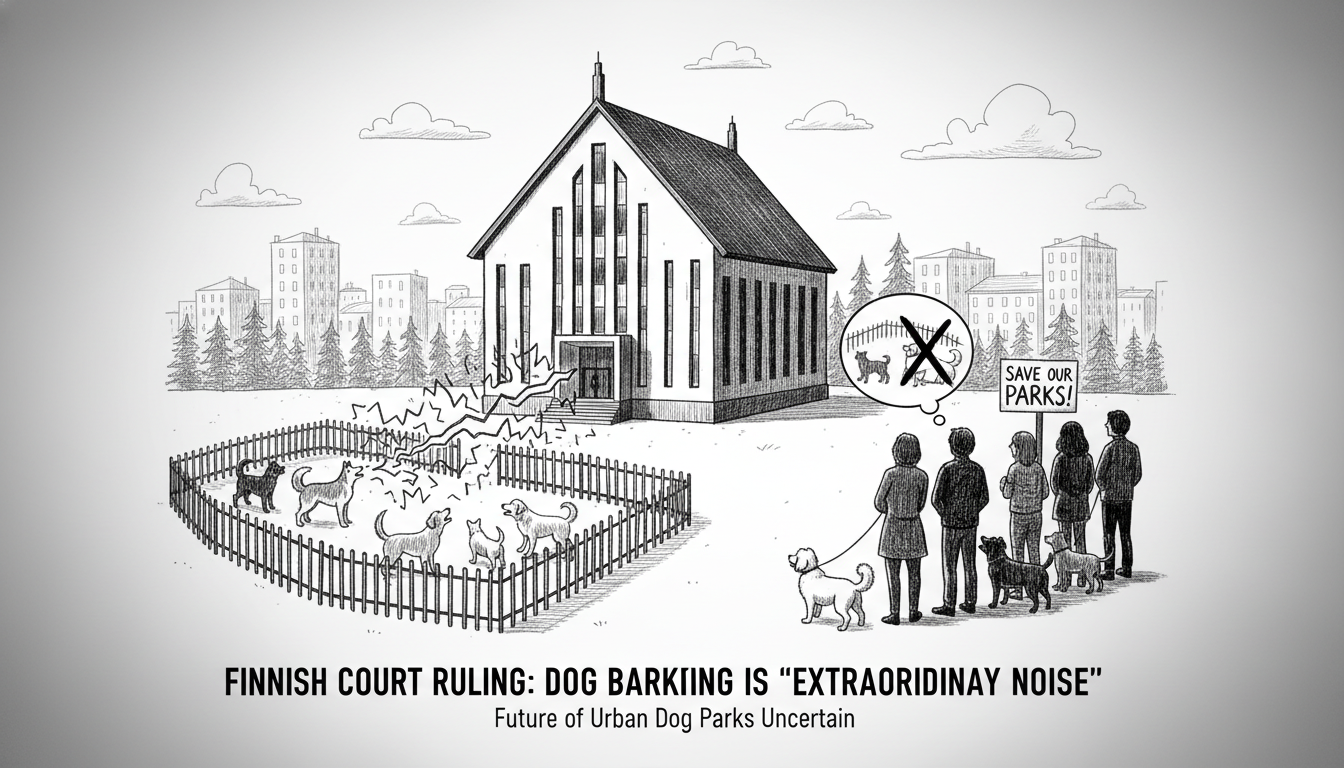A Finnish administrative court has delivered a landmark ruling that could reshape urban pet policies across the country. The Vaasa Administrative Court determined that dog barking constitutes extraordinary noise requiring environmental permits, not ordinary urban background sound that neighbors must tolerate. This decision specifically targets Vantaa's Kivistö dog park where residents complained about noise levels reaching 53 decibels indoors, exceeding Finland's 45-decibel guideline for residential spaces. The case now heads to the Supreme Administrative Court as Vantaa seeks appeal permission, recognizing the national implications for municipal pet facilities.
Vantaa's Streets and Parks Planning Director Markus Holm acknowledges the ruling's broader impact on Finnish cities. Municipalities nationwide now face reconsidering their approach to dog park locations and noise management. The court specifically cited environmental legislation requiring restoration of pre-violation conditions or removal of environmental harm. This legal interpretation creates immediate challenges for urban planners balancing pet owner needs with residential tranquility.
Dog owners express frustration about potential park relocations to distant locations. Local resident Janna Saaristola questions the logic behind moving facilities away from residential areas, noting urban dog parks specifically exist to serve neighborhood pets. Her rescue dogs Kiivi and Bambu represent thousands of Finnish pets relying on these enclosed spaces for off-leash exercise unavailable elsewhere in cities.
The Kivistö facility exemplifies Finland's urban development challenges. Originally built in the 1990s and expanded during the 2010s housing boom, the park now sits between older single-family homes and newer apartment buildings. City measurements recorded up to 1,500 daily barks during peak usage, with calculated maximum levels surpassing guidelines despite average levels remaining acceptable.
This case highlights Finland's precise environmental regulation approach. Courts considered maximum noise levels particularly relevant because barking occurs unpredictably rather than as constant background noise. The ruling creates procedural complications since noise issues often emerge after construction completion rather than during planning phases when neighbor objections could be formally registered.
Vantaa has implemented mitigation measures including turning off park lights from 10 PM to 7 AM and posting notices about respecting neighbor peace. However, the court determined these efforts insufficient without proper environmental permitting. The city faces practical challenges since neither of two planned replacement dog parks will open soon, with the nearest alternative potentially delayed for several years.
The Supreme Administrative Court's upcoming decision will determine whether Finnish municipalities must retrofit existing dog parks with environmental permits or potentially relocate them. This case represents broader tensions between urban density and quality of life as Finnish cities balance competing resident interests in increasingly crowded metropolitan areas.

